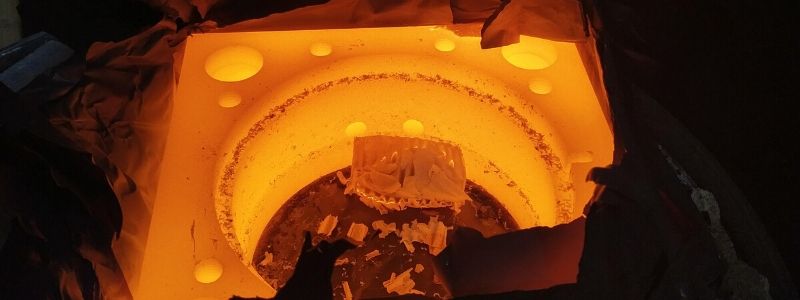
During the mold manufacturing process, various problems may be encountered. Today molds rely on machining. Often due to an improper operation, the mold fails early. Heat treatment is an important part of the die making process. This article is to explore the defects that may occur during the heat treatment of the mold.
Quench crack
1.Shape effect. Mainly caused by design factors, such as the fillet R is too small, improper hole location, cross-section of the transition is not good.
2.Overheating (over-burning). Mainly by the temperature control are not allowed or running temperature, process temperature is too high, uneven temperature factors, preventive measures include: overhaul, proofreading temperature control system, modify the process temperature, in the workpiece and the furnace floor plus horn.
3.Decarburization. Mainly by the overheating (or over-burning), the air furnace without protection heating, machine plus margin is small, forging or heat treatment residual decarburization layer and other factors, preventive measures are: controlled atmosphere heating, salt bath heating, vacuum furnace, Type furnace using packing protection or the use of die casting mold making; machining allowance increased 2-3mm.
4.Improper cooling. Mainly due to improper selection of coolant or cold, should be controlled quenching medium cooling characteristics or tempering treatment.
5.Raw materials are not well organized. Such as serious carbide segregation, poor quality forging, preparation of improper heat treatment methods, preventive measures are: the right forging process and a reasonable pre-heat treatment system.
The hardness is insufficient
1.Quenching temperature is too low. Mainly due to improper temperature setting process, temperature control system error, improper installation of the furnace or into the cooling tank and other reasons should be amended process temperature, temperature control system calibration check, installed furnace, the workpiece spacing reasonable and evenly distributed into die casting mold making, to prohibit the stacking or bundling into the slot cooling.
2.Quenching temperature is too high. This is set by the process temperature or temperature control system error caused by improper, should be amended process temperature, maintenance check temperature control system.
3.Tempering. This is set by the tempering temperature is too high, the temperature control system error or furnace temperature is too high into the furnace caused by the process temperature should be revised, check the check temperature control system, not higher than the set temperature load.
4.Improper cooling. The reason is pre-cooling time is too long, improper cooling medium selection, quenching medium temperature is getting high and cooling performance, poor mixing or the tank temperature is too high. Oil temperature 60-80 ℃, water temperature below 30 ℃, when the quenching of large cooling medium so that when the temperature should be added to the cooling quenching medium or switch to other cooling tank to use the cooling medium; Cooling; to strengthen the stirring of the coolant; in Ms +50 ℃ when removed.
5.Decarburization. This is caused by the residual decarburization of raw materials or quenching heating, prevention measures for the controllable atmosphere heating, salt bath heating, vacuum furnace, box-type furnace box protection or use of anti-oxidation coating; machining margins increase the 2- 3mm.
Decarbonization
Decarbonization is result of that the steel in the heating or insulation, due to the role of the surrounding atmosphere, the part of the surface layer of carbon all or part of the loss of the phenomenon and reaction. Decarburization of steel will not only result in insufficient hardness, quenching crack and heat treatment deformation and chemical heat treatment defects, but also on fatigue strength, wear resistance and mold performance also has a great impact.
The electrical discharge caused by the crack
In the mold manufacturing, the use of EDM (electric pulse and wire cutting) is more and more commonly used in processing methods, while with the extensive application of EDM, the defects caused by a corresponding is increasing.
Since the electric discharge machining is a processing method of melting the mold surface by the high temperature generated by the discharge, a white EDM layer is formed on the machined surface thereof and a tensile stress of about 800 MPa is generated. Thus, during the electrical machining process of the die often appear defects such as deformation or cracks.
Lack of toughness
The reason for the lack of toughness may be quenching temperature is too high, and the holding time is too long cause grain coarsening caused, or because there is no to avoid tempering brittle area tempering.
Grinding cracks
When the workpiece has a large number of retained austenite, the role of heat in the grinding, the occurrence of tempering transformation, resulting in tissue stress, resulting in workpiece cracking. The preventive measures are: quenching after repeated cryogenic treatment or repeated tempering (mold tempering is generally 2-3 times, even cold work with low-alloy tool steel, as well), to minimize the amount of residual austenite.
Grinding cracks
Mold manufacturing requires experience. spark mould is a professional mold manufacturer. We have extensive experience. If you have questions about molds, please feel free to contact us for support.
